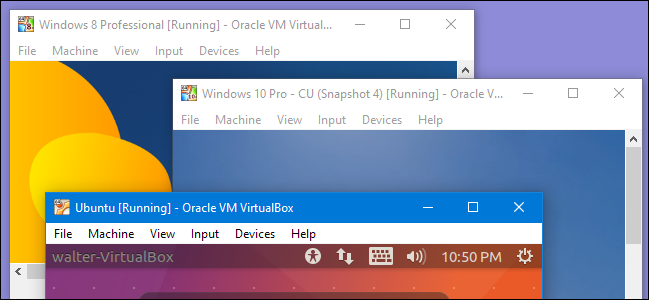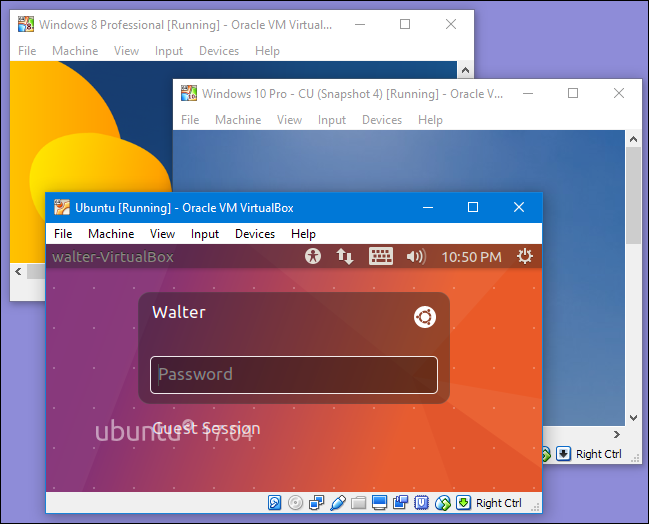Beginner Geek: How to Create and Use Virtual Machines

Virtual machines allow you to run an operating system in an app window on your desktop that behaves like a full, separate computer. You can use them play around with different operating systems, run software your main operating system can't, and try out apps in a safe, sandboxed environment.
There are several good free virtual machine (VM) apps out there, which makes setting up a virtual machine something anybody can do. You'll need to install a VM app, and have access to installation media for the operating system you want to install.
What's a Virtual Machine?
A virtual machine app creates a virtualized environment-called, simply enough, a virtual machine-that behaves like a separate computer system, complete with virtual hardware devices. The VM runs as a process in a window on your current operating system. You can boot an operating system installer disc (or live CD) inside the virtual machine, and the operating system will be "tricked" into thinking it's running on a real computer. It will install and run just as it would on a real, physical machine. Whenever you want to use the operating system, you can open the virtual machine program and use it in a window on your current desktop.
In the VM world, the operating system actually running on your computer is called the host and any operating systems running inside VMs are called guests. It helps keep things from getting too confusing.
In a particular VM, the guest OS is stored on a virtual hard drive-a big, multi-gigabyte file stored on your real hard drive. The VM app presents this file the guest OS as a real hard drive. This means you won't have to mess around with partitioning or doing anything else complicated with your real hard drive.
Virtualization does add some overhead, so don't expect them to be as fast as if you had installed the operating system on real hardware. Demanding games or other apps that require serious graphics and CPU power don't really do so well, so virtual machines aren't the ideal way to play Windows PC games on Linux or Mac OS X-at least, not unless those games are much older or aren't graphically demanding.
If you want to rotate the screen in Windows, first you must be a Windows system user and have activated it. If you need you can check softkeyhome.co.uk to find windows product key online with the lowest price.
The limit to how many VMs you can have are really just limited by the amount of hard drive space. Here's a peek at some of the VMs we use when testing things out while writing articles. As you can see, we've got full VMs with several versions of Windows and Ubuntu installed.

You can also run multiple VMs at the same time, but you'll find yourself somewhat limited by your system resources. Each VM eats up some CPU time, RAM, and other resources.

Why You'd Want to Create a Virtual Machine
Aside from being good geeky fun to play around with, VMs offer a number of serious uses. They allow you to experiment with another OS without having to install it on your physical hardware. For example, they are a great way to mess around with Linux-or a new Linux distribution-and see if it feels right for you. When you're done playing with an OS, you can just delete the VM.

VMs also provide a way to run another OS' software. For example, as a Linux or Mac user, you could install Windows in a VM to run Windows apps you might not otherwise have access to. If you want to run a later version of Windows-like Windows 10-but have older apps that only run on XP, you could install Windows XP into a VM.
Sandboxes Explained: How They're Already Protecting You and How to Sandbox Any Program
Another advantage VMs provide is that they are "sandboxed" from the rest of your system. Software inside a VM can't escape the VM to tamper with the rest of your system. This makes VMs a safe place to test apps-or websites-you don't trust and see what they do.
For example, when the "Hi, we're from Windows" scammers came calling, we ran their software in a VM to see what they would actually do-the VM prevented the scammers from accessing our computer's real operating system and files.
